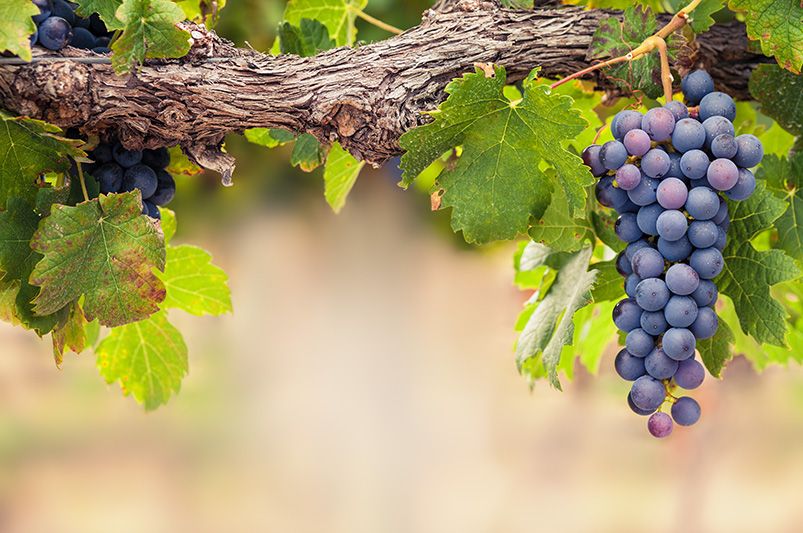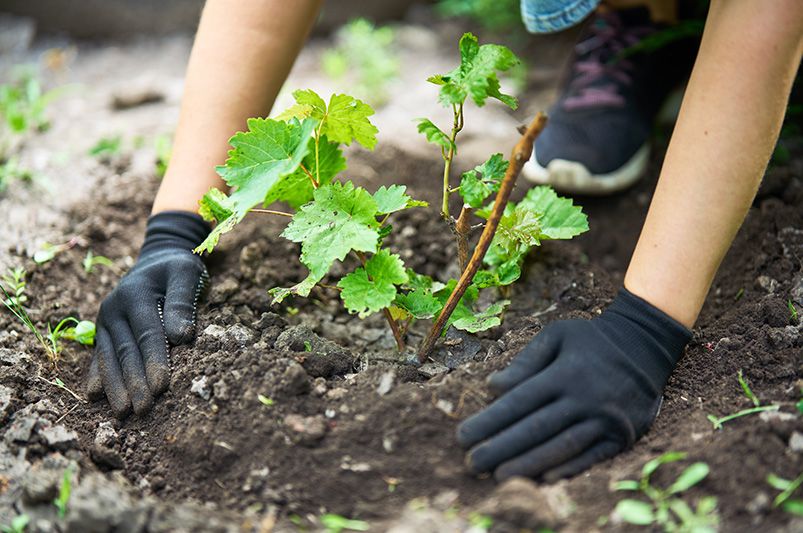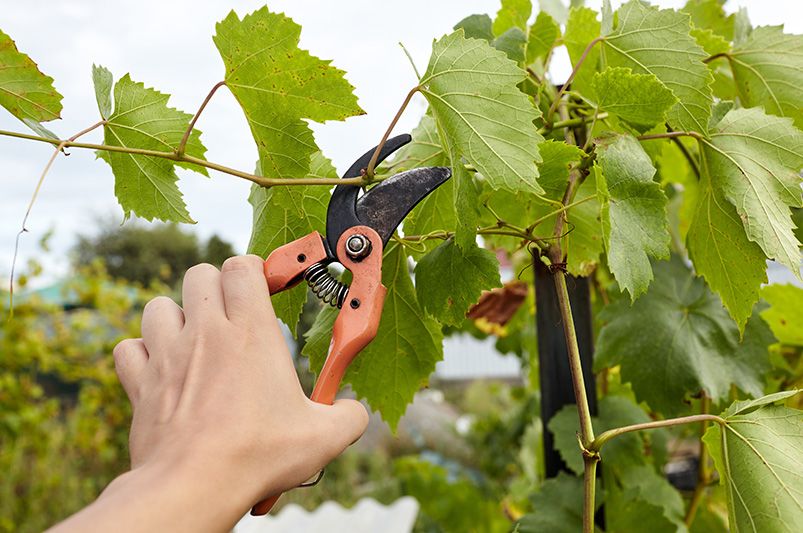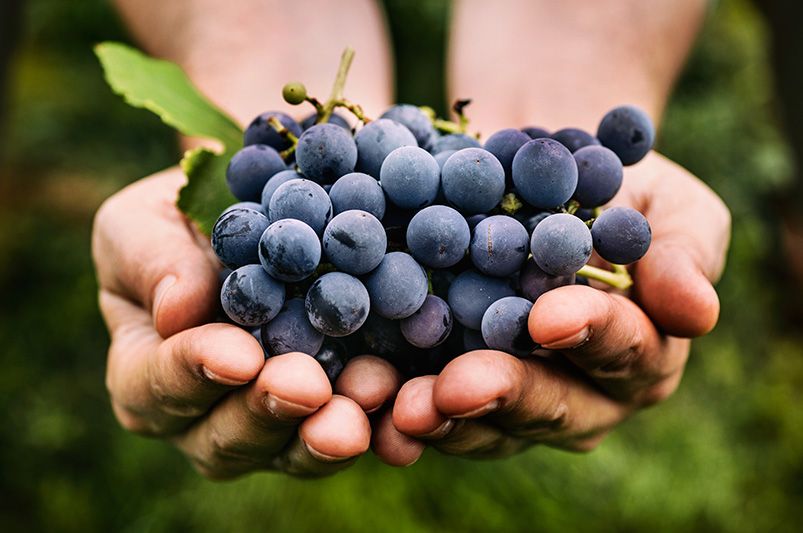
A Full Guide to Growing Grape Vines
Published: 05/03/2024 | Updated: 18/12/2025
Growing grape vines can be a rewarding experience.


Like other vines or climbing plants, they aesthetically add a lot to the landscape; you'll have fresh grapes to harvest from your garden, which you can make jams or even try your hand at homemade wine.
Here is our detailed guide with steps and tips for successfully growing grapes:
Where to Start?
Successfully growing grapes is a multi-step process that requires attention and focus from you.
It's not as complicated as many people imagine, but providing as many ideal conditions as possible will reward you with a smooth experience and stunning results.
Smooth and successful gardening and landscaping is something we care a lot about at Shrubhub. On our weekly blogs, you'll find many guides, helpful tips, and recommendations for making your landscape better on every level. Check them out here.
Choose the right variety
This is the first and most important step. If you pick out the wrong variety for your landscape and climate, then all your following hard work will go to waste.
The most crucial aspect to consider is the climate (unless you have a greenhouse) and how cold-hardy the type is compared to your USDA hardiness zone.
Eating and Jam
Then contemplate what is exactly your intended use with the grapes; other than aesthetic reasons, whether you want table grapes, jam grapes, or wine grapes.
Seedless grapes tend to be a favorite table grapes, like Flame Seedless, alongside Red Globe, and Black Monukka, while European grapes are the most flavorful.

Wine Grape
Muscadine grapes are favored for both jam and wine, and specific types, such as Cabernet Franc, Zinfandel, Pinot Noir, and Vitis vinifera (Merlot wine grape) have specific wine use, etc.
The right grape variety depends on what exactly you'd want from it. Consider factors such as flavor, and disease resistance, alongside the mentioned intended purpose (eating, wine-making, or both) when choosing grape varieties.
While checking out our available grape varieties, which you can read the description for to determine whether they fit your climate or not, and be sure you'll get high-quality fruit with no delivery damage, also make sure to browse our garden marketplace at Shrubhub for more vines, plants, shrubs and trees to bring life into your landscape.
Site selection
The planting site matters a lot when it comes to any plant, especially grape vines, which will be more difficult to transplant down the line. Here's what you should look for:
Sun Exposure
With slight differences between grape varieties, grape planting tends to be straightforward when it comes to sun exposure needs.
To grow grapes well and be sure they'll produce fruit of the best quality, you need to provide at least 6 hours of direct sunlight, with 8 full sun being ideal.
Soil Conditions
Ideal soil conditions are equally essential for good grape production. The soil should be well-drained.
Warmer soil is preferred so make sure to use mulch or something similar to keep soil temperature controlled, especially if you're going for fall planting.
Conduct a soil test to determine nutrient deficiencies, pH levels, and organic matter content. Grape vines grow best in a pH range of 6.0-7.0.
Air Circulation
Choose a location that is sheltered from strong winds, preferably with provided winter protection, and has good air circulation to reduce the risk of disease transmission.
Soil preparation
Prepare the soil by removing weeds, rocks, and debris.
Improve soil drainage if necessary by incorporating organic matter like compost or well-rotted manure.

Planting
While fall planting is also an option, spring planting after the danger of frost has passed.
Dig a planting hole deep and wide enough to accommodate the root system. If planting bare-root vines, make sure to remove all canes and leave the most vigorous to get a strong root system. With bare root plants, you should also soak for a few hours then dig a hole and plant it.
If there are any excessively long roots, trim them off. The hole should be two or three times as big, to leave room for the root system to extend, grow deep, and spread without bending or crowding.
Place the vine in the hole, spreading the roots completely out, and backfill with the remaining soil, firming the soil surface gently and ensuring the bud union (the swollen area on a grafted vine) is above the soil line.
Grapes grow best spaced about 6-10 feet apart in rows, with rows spaced 8-12 feet apart.
Water thoroughly after planting.

Training and Trellising
When you plant vines, especially for the first time, training and trellising plant vines is a new aspect that you'll have to get used to.
Grapevines especially need support for upright and fruit production, no matter the grape varieties. It's important for their air circulation and sunlight exposure. (You don't want them growing into dense shade.) It's also a big part of their aesthetic appeal.
Train the main stem vertically along a trellis or support structure and choose the best shoots to serve as primary branches along the wire trellis.
Use training methods like the High Cordon, Geneva Double Curtain, or Kniffin system.
Prune and tie the shoots as they grow to the trellis wires or structure to maintain a tidy framework.
Grape growers know it's best to train young grapes as soon as possible.
As the vine grows, secure the shoots to the trellis wires using plastic clips or soft twine. Trim excess shoots.

Watering
Provide regular and consistent watering, especially during the growing season after growth begins.
Deeply water the vines once a week, ensuring the soil is moist but not waterlogged.
Reduce watering in late summer to encourage fruit ripening when the vines mature.
Growing grapes requires regular watering, especially during the growing season. Deep watering is crucial to encourage the vines' roots to grow deeper into the soil.
A good rule of thumb is 1-2 inches of water per week. Makeup with irrigation in case of no sufficient rainfall.
Fertilizing
Fertilize grape vines in early spring before bud break. Use a balanced fertilizer or one with slightly higher phosphorus and potassium levels.
Avoid excessive nitrogen application, as it can promote excessive leaf growth at the expense of fruit production and you'll find fewer ripening fruit than you'd prefer.

Pruning
Grape pruning is best during the dormant season (late winter or early spring) to promote airflow and reduce diseases. You might want to prune both in late winter and early spring when training the vines.
During annual pruning, remove weak or damaged wood, and train new growth on the vines by removing excess shoots to the new growth and maintain a manageable and balanced canopy.
Around four to seven fruiting canes should be supported and fully functional.
Prune grapevines to help shape the vine, remove dead wood, as well as ensure the produced grape clusters receive enough energy to ripen. Otherwise, it'll produce grape clusters and fruit that will not ripen.
Pest and Disease Management
There are no grape cultivars, hybrids or otherwise, that are extremely disease-resistant, so you'll have to pay attention when you grow grapes.
Humidity is something to think about, as high humidity promotes infection.
Fungi Diseases
Fungi issues like powdery mildew, black rot, and botrytis bunch rot are common enough among grape vines.
Pests
Monitor grapevines regularly for common pests such as aphids, and mealybugs.
Prevention
Use organic or integrated pest management (IPM) techniques like beneficial insects, neem oil, or horticultural oils.
Practice good hygiene, including cleaning up fallen leaves and pruning debris.
Also, make sure to sterilize your pruning shears and any other tools you use so you limit any infection, especially of such common plant diseases like powdery mildew.

Harvesting
Harvesting grapes depends on the type of grapes.
Table Grapes
Table grapes are typically ready for harvest in late summer or early fall. Harvest when the grapes have reached their desired sweetness and flavor.
Gently pick grapes and clusters harvesting grapes, being careful not to damage the vines or fruit.
Taste test grapes regularly to determine their readiness.
Wine Grapes
Growing grapes for wine is a bit different. Harvest dates would be determined by the winemaker based on the desired sugar levels and flavor development.
Additional Tips:
You know should know how to plant grapes perfectly.
You can prepare to plant them this early spring with this information on how to select, prepare for, and maintain your vines.
Here are some more tips to make sure growing grapes is a successful and rewarding experience for you.
Mulch
Mulch around the base of the grapevines to conserve moisture and reduce weed competition as well as conserve warmth.
Most grape vines, whether table grapes or wine grapes aren't very cold hardy. American (Vitis labrusca) is the most winter hardy, with the ability to grow in zone 4 with some protection.
Protection
Protect grapevines from cold winter temperatures by wrapping them with frost blankets or burlap, especially for young vines.
Remove any snow accumulation from the vines to prevent breakage. Breakage can especially lead to infection of diseases such as black rot.
Keep it Written
Consider keeping a journal to record observations, fertilization and watering schedules, pruning dates, and any pest or disease issues for the vines regularly so that you have a future reference.
It'll help you especially if you're experimenting with varieties.
Remember, growing grapes may vary depending on the specific variety, climate, and growing region. Experiment and educate yourself as you go. With the help of this guide, growing grape vines will be easier for you.
Make sure your landscape design is exactly as you want it to be. It's no use developing your landscape if the foundational design itself isn't well thought out. If this hits close to home, have no worries; at Shrubhub, we're currently offering a 70% discount on all our designing services, including the 3D landscape design. You only need to sign up here and someone from our team will contact you as soon as possible.


